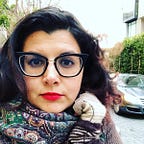I was chatting with my cousin L. yesterday. He just had a baby and was telling me about cousin J.’s wedding. This is all very normal cousin conversation. Except that before Friday, L. and I didn’t know that the other existed, never mind that we were cousins. As often happens in these modern times, we found each other because of a DNA test.
I signed up for 23andme and ancestry.com shortly after my father died. As I’ve written before, my Dad was a war orphan, and spent a good chunk of his life wonder where he came from. Now that he was gone, I swabbed my mouth and spit into tubes in the hopes of maybe, hopefully answering the question for him.
Alas, no such luck: all the genetic matches who came up in my search were from my mother’s side of the family, the Jewish side. This makes sense: Eastern European Jews were a small, insular community and many of them came to the United States in waves to escape antisemitism and violence in the Russian Empire and the horrors of the Holocaust.
It did solve a puzzle of sorts though. When my grandfather was alive, he told us about an uncle, his father’s brother, who immigrated to America at the beginning of the 20th century. The families lost touch after the Russian Revolution, especially as the iron curtain descended on my half of the family in the Soviet Union.
And now, 114 years later, their great grandchildren have found each other. I already have so many cousins from my side of the family: my great grandparents had 14 children. Turns out, I have even more.
